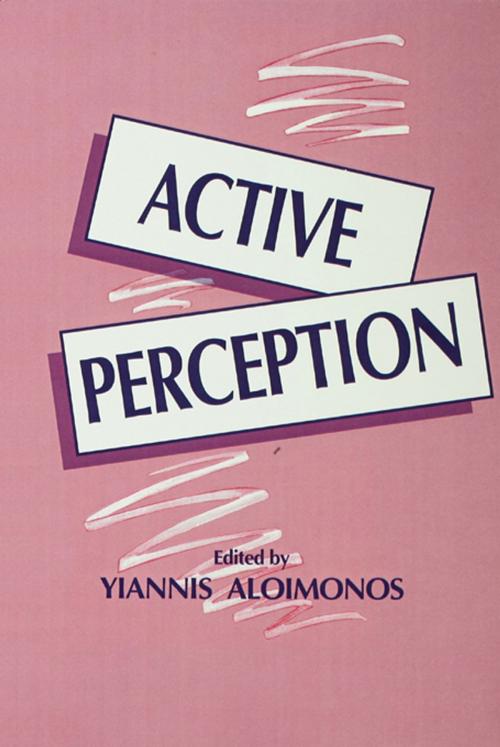| Author: | ISBN: | 9781134776092 | |
| Publisher: | Taylor and Francis | Publication: | May 13, 2013 |
| Imprint: | Psychology Press | Language: | English |
| Author: | |
| ISBN: | 9781134776092 |
| Publisher: | Taylor and Francis |
| Publication: | May 13, 2013 |
| Imprint: | Psychology Press |
| Language: | English |
This book defines the emerging field of Active Perception which calls for studying perception coupled with action. It is devoted to technical problems related to the design and analysis of intelligent systems possessing perception such as the existing biological organisms and the "seeing" machines of the future. Since the appearance of the first technical results on active vision, researchers began to realize that perception -- and intelligence in general -- is not transcendental and disembodied. It is becoming clear that in the effort to build intelligent visual systems, consideration must be given to the fact that perception is intimately related to the physiology of the perceiver and the tasks that it performs. This viewpoint -- known as Purposive, Qualitative, or Animate Vision -- is the natural evolution of the principles of Active Vision. The seven chapters in this volume present various aspects of active perception, ranging from general principles and methodological matters to technical issues related to navigation, manipulation, recognition, learning, planning, reasoning, and topics related to the neurophysiology of intelligent systems.
This book defines the emerging field of Active Perception which calls for studying perception coupled with action. It is devoted to technical problems related to the design and analysis of intelligent systems possessing perception such as the existing biological organisms and the "seeing" machines of the future. Since the appearance of the first technical results on active vision, researchers began to realize that perception -- and intelligence in general -- is not transcendental and disembodied. It is becoming clear that in the effort to build intelligent visual systems, consideration must be given to the fact that perception is intimately related to the physiology of the perceiver and the tasks that it performs. This viewpoint -- known as Purposive, Qualitative, or Animate Vision -- is the natural evolution of the principles of Active Vision. The seven chapters in this volume present various aspects of active perception, ranging from general principles and methodological matters to technical issues related to navigation, manipulation, recognition, learning, planning, reasoning, and topics related to the neurophysiology of intelligent systems.















